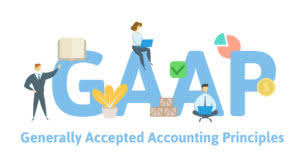
Most nonprofits elect some Bookstime kind of treasurer or financial officer to manage all of the organization’s finances. Using a personal bank account and keeping a shoebox full of receipts isn’t going to cut it. Our intuitive software automates the busywork with powerful tools and features designed to help you simplify your financial management and make informed business decisions. When you have accurate numbers for the cost and projected revenue of fundraising campaigns, you can end your campaign in the black and amplify programming.
- Strategic financial planning poses a unique challenge in the nonprofit sector.
- This transparency builds credibility, strengthens relationships with stakeholders, and attracts more support.
- Updating these records should be part of regular bookkeeping and accounting operations, and the financial tracking system should be standardized across the organization.
- Volunteers, for example, may provide unpaid labor, but that labor still has value that can affect your taxes and overhead.
- Organizations must develop allocation methods that are fair, defensible, and consistently applied across all programs and funding sources.
- Nonprofit accounting professionals must adhere to specific guidelines when they create reports.
- Statement of Financial Position – This key financial statement (which we’ll discuss below) is called the BALANCE SHEET in a for-profit business.
Nonprofit Accounting: A Guide to Basics and Best Practices
By understanding how well you have kept to your original budget, you can make adjustments that lead your programming through the entire year, increasing your impact. Because nonprofits are so unique, they leverage a different type of accounting, also known as “fund accounting” to manage their finances. While you may not have entered the nonprofit sector to become a financial expert, nonprofit accounting is vital to the success of your organization. The tax code for nonprofits can be confusing, and tax reforms can affect everything from how you report income to how you manage volunteers. This guide will help you stay on top of your nonprofit accounting responsibilities.

Do nonprofits need accountants?
Effective nonprofit accounting requires promptly recording the amount and date of each donation, noting any donor restrictions, and ensuring that necessary acknowledgments and tax documentation are provided. This initial step sets the foundation for all future tracking and reporting. Nonprofit accounting is a specialized method of tracking finances, emphasizing accountability and mission impact over profits. Even your choice of accounting software must align with the unique tracking requirements because regular business tools often fail to do so.
Essential elements of nonprofit accounting

Meanwhile, organizations with impactful and effective accounting will be more likely to allocate their resources appropriately and drive their mission forward. Volunteers, for example, may provide unpaid labor, but that labor still has value that can affect your taxes and overhead. Though the terminology differs, nonprofits and for-profits use the same accounting principles. Because nonprofit accounting is all we do, there is zero guesswork on terminology, procedures, and nonprofit-specific reporting like fund accounting and functional expenses.
Temporarily Restricted Funds
If you’ve dealt with for-profit cash flow statements before, this should look very familiar. Bench simplifies your small business accounting by combining intuitive software that automates the busywork with real, professional human support. The paper presents the integrated notion of the formation stages of the national concept of archeological monuments preservation, researching and exploitation what are retained earnings in the Soviet period after 1945. The role of thescientific, power and social institutions is analyzed in this respect. Legislative acts, regulations and materialsof theoretical and practical conferences are used as primary sources.

Are There Organizations Exempt from Filing Form 990?
Auditing is the process of inspecting and reviewing your financial statements to guarantee the accuracy and completeness of your financial records. If you’ve applied for tax-exempt status under Section 501, you can receive special tax exemptions. Detailed financial reporting hands them this information, in turn improving your relationships and increasing their willingness to support you. They also want authentic insight into the operational performance of your organization to evaluate whether your activities align with your mission and adhere to your goals. Everyone who makes a contribution to your organization, however big or small, will want to trust that it’s going to the right place.
Everything you need to succeed as a nonprofit executive director
- It helps ensure donor restrictions are honored and funds are used as intended.
- Check in with your budget regularly, preferably bi-weekly or monthly, comparing your budgeted revenue and expenses against your actual income and expenses.
- The paper presents the integrated notion of the formation stages of the national concept of archeological monuments preservation, researching and exploitation in the Soviet period after 1945.
- The Statement of Functional Expenses breaks this down into program costs versus administrative expenses.
- You can also study historical data to evaluate which activities generated revenue and which underperformed.
- Additionally, automation can help nonprofits track restricted and unrestricted funds more effectively, ensuring compliance with donor intentions and tax-exempt status requirements.
Beyond basic financial ratios, track indicators that show your resource efficiency and program sustainability. Monitor trends in donor retention rates, program cost per beneficiary, and operating reserve levels. Creating realistic budgets becomes challenging when funding isn’t guaranteed. non profit accounting basics In such situations, the immediate needs of the program take precedence over the building of operating reserves. The audit process strains resources, taking staff time away from regular duties and often revealing areas needing improvement.

- Seamlessly organize financial statements and donor data with nonprofit accounting software.
- A nonprofit accountant may do all the above – including bookkeeping – depending on the organization’s size.
- While bookkeepers maintain the accurate daily records that accountants need for analysis, accountants set up the systems and procedures for the bookkeepers to follow.
- Detailed financial reporting hands them this information, in turn improving your relationships and increasing their willingness to support you.
- For instance, mental health nonprofits often have high administrative costs because of licensing and compliance requirements.
- Luckily, here at Jitasa, we don’t think nonprofit accounting is tedious at all!
Public viewpoints on overhead expenses hurt the nonprofit industry a great deal. Overhead includes those expenses that nonprofits use to cover administrative costs, market their mission for fundraising, and pay for other internal expenses that help the organization grow. Essentially, overhead expenses are those that nonprofits use to pay for anything that isn’t a program directly related to the organization’s mission. Because nonprofits are so different from regular businesses, they have unique accounting requirements and best practices. Understanding these guidelines will help your nonprofit succeed in its mission, all while ensuring accountability and tax-exempt status through transparent financial reporting. In this guide, we’ll explain everything you need to know about accounting for nonprofits.


Leave a reply